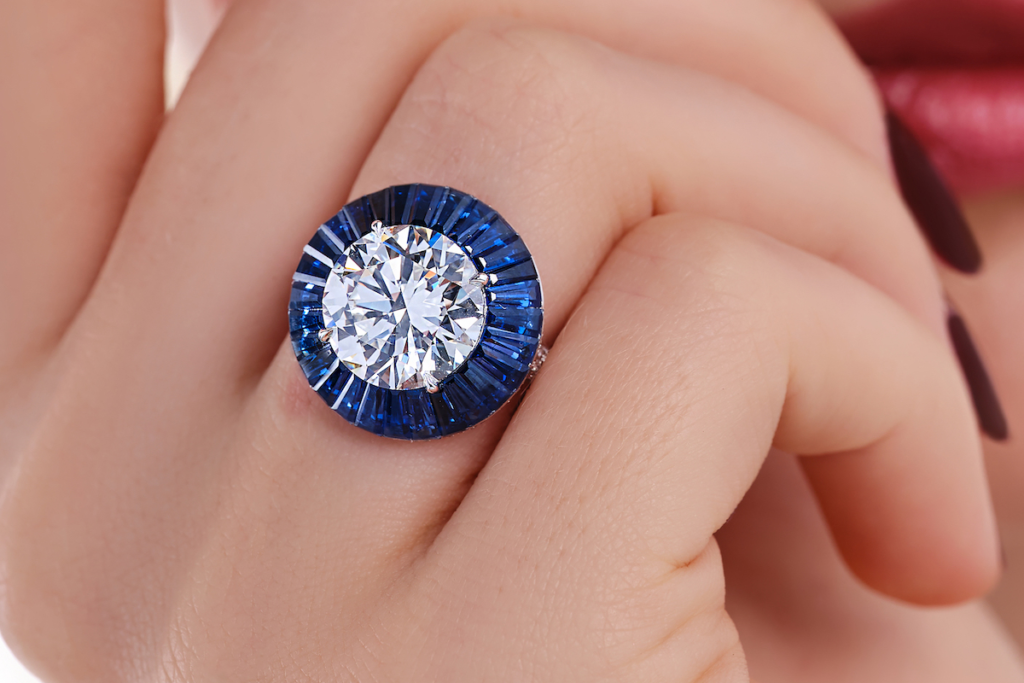Colors bring great joy to our lives and help us express ourselves. The same is true for diamonds. Each diamond has a unique color that can be either very light in tone or dark, depending on the cut, clarity, and other factors.
Diamond color is a major factor in determining the value of a diamond. The color of the diamond can affect its price by hundreds or even thousands of dollars. A white diamond, for example, is worth more than a fancy-colored stone with less intrinsic value.
Ultimately, color is a very important factor when it comes to choosing the right diamond for your needs. Here, we will cover all you need to know about diamond color, including what each grade means and how color affects its price.
What is Diamond Color?
A diamond’s color is determined by how clear or yellow it appears. In general, the most valuable diamonds are the most colorless, and lower-grade ones usually have some tint of yellow.
The Gemological Institute of America’s (GIA) color scale for diamonds, which ranges from D (colorless) to Z (light yellow or brown), is the system used most often by jewelers and gemologists.
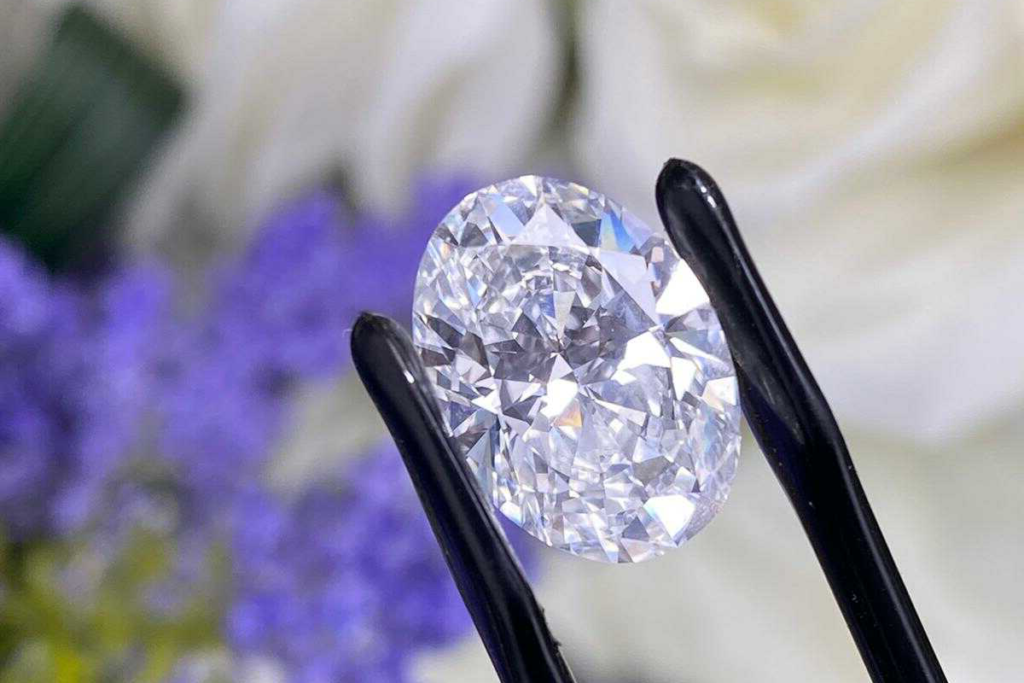
The color of a diamond is an important consideration when buying one. Color can affect a diamond value, and in most cases, a higher-grade color is more valuable than lower grade stones.
A diamond with no tint (D or E) is classified as colorless and has the highest value, while those with light yellow tints (G through I) are less expensive. It is a diamond’s most obvious visual attribute and the most important factor in determining its value.
The more colorless a diamond is, the higher its price. However, there are many other factors to consider as well. According to the brilliant earth color chart, color can be a good indicator of quality because it indicates that no blemishes or impurities have made their way into the stone during its formation.
Different colors of diamonds may cost more or less, depending on the demand in a given market. If you’re looking to save money without sacrificing the appearance of your diamond ring, then choosing a specific color could help enhance its value while maintaining an acceptable price point.
Colored diamonds are in high demand and available in a rainbow of hues. But among white diamonds, a yellow tint is often regarded as a negative trait.
Less of the light’s natural color is mirrored to the eye when the diamond has slight coloring. The less color a diamond has, the more brilliant, rare, and valuable it is.
Simply put, a colorless diamond is much more valuable than an otherwise identical diamond with a faint yellow hue.
What are the 12 colors of diamonds?
What are the 12 colors of diamonds? There are twelve colors of naturally occurring diamonds. These are black, white, red, violet, purple, gray, brown, green, orange, pink, blue, and yellow.
There are also chameleon diamonds that can change their colors depending on the lighting or background. But these are primarily yellowish or greenish diamonds that briefly shift colors when subjected to heat or light.
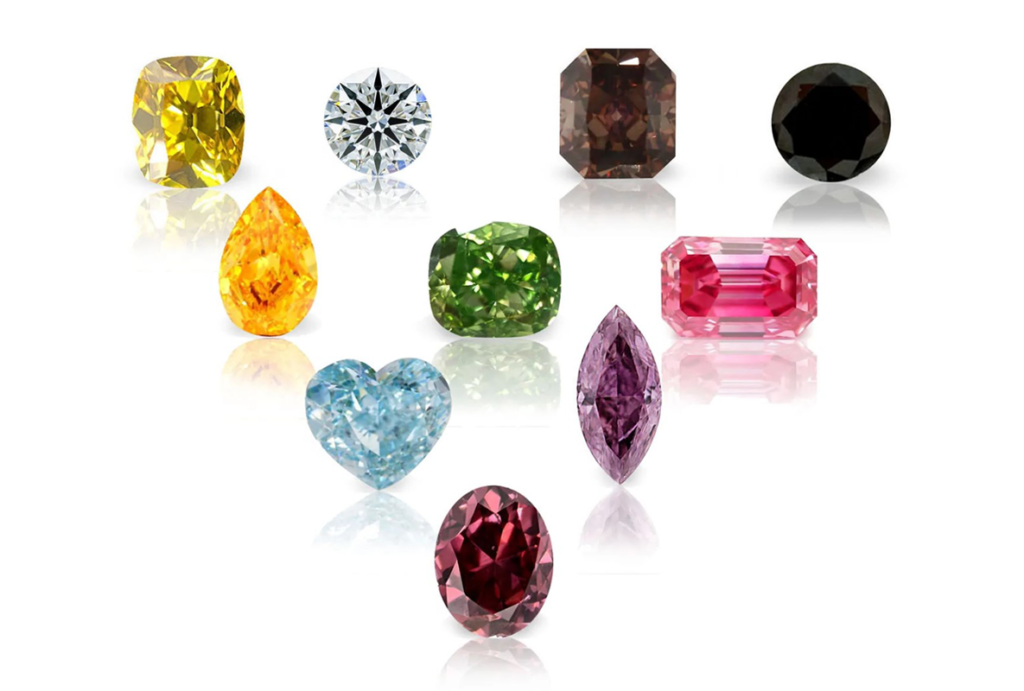
Pure, single-color diamonds are the most coveted and valuable because they’re rare but usually the most pricey. This is because there are various kinds of colored diamonds with extraordinary characteristics.
Colored diamonds are made up of two (or more) elements, and they’re more common than you might think. It’s also important to note that these stones can be exceptionally beautiful—and many people consider them the perfect diamond for engagement rings because of their rarity and beauty.
Suppose a diamond’s primary color is green (say more than 50%) and displays a comparatively strong blue tint (say 35%). Once evaluated, it would be established as a blue-green diamond. However, if the nuanced color is not strong (e.g., only 10%), it would be assessed as a bluish green diamond.
What is the Diamond Color Chart?
The American Gem Society Color Scale uses a range of zero to 10 to indicate where a diamond’s color falls on the spectrum, with 0 (D, the best color) being completely colorless and 10 (Z, the base color) denoting light yellow or brown tones. Which diamond color is better D or E? Let’s find out!
D Color Diamonds
D color grade is the highest available and considered the best diamond under the GIA’s diamond color code. Under magnification, such a diamond will appear completely without color.
White and platinum settings are best for showcasing the beauty of a D color diamond. When choosing high-quality diamonds, those with a D color grade are considered the most valuable and, therefore, command a considerable price markup over lower-quality stones.
E Color Diamonds
These diamonds are so close in color to D-colored diamonds that it’s hard for most people to tell the difference. Most jewelers can’t tell the difference between a D and an E diamond unless they use a magnifying glass.
Because of their color, E-color diamonds are best set in platinum or white gold to avoid the jewelry’s color detracting from its near-flawless hue. Although these diamonds are less expensive than D-quality diamonds, they still cost a great deal.
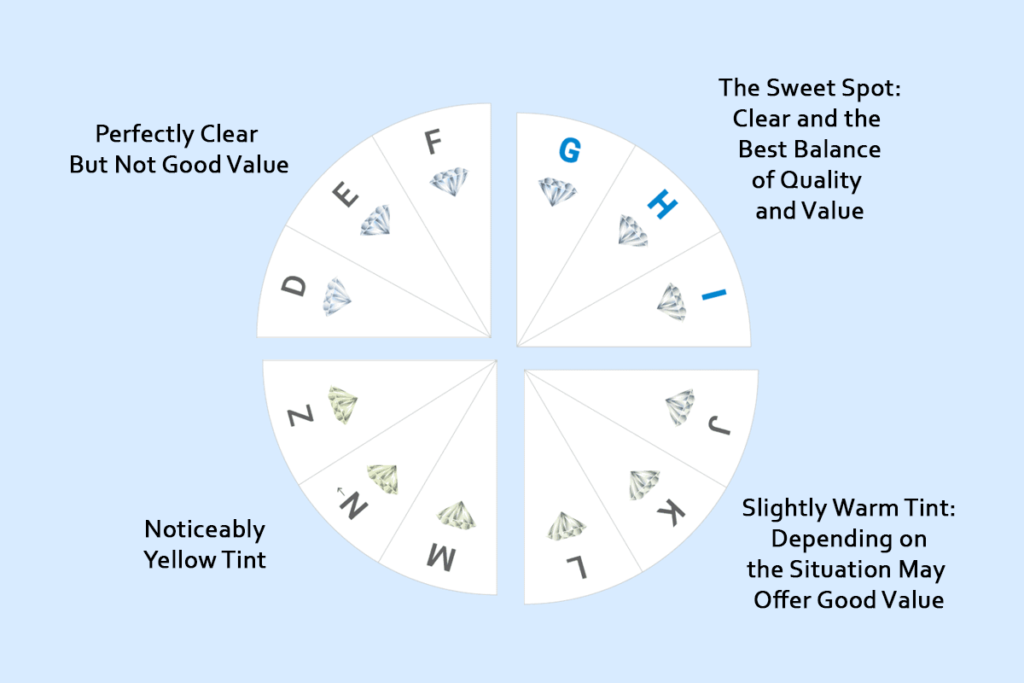
F Color Diamonds
These diamonds are nearly identical to the D and E classifications, with little color visible under normal lighting.
The differences between a D, E, and F diamond can be difficult for even a gemologist to detect. Only under magnification can an expert see the disparities between an F color diamond and other higher-grade ones.
G Color Diamonds
G-colored diamonds are nearly colorless and can be distinguished only by their slight yellow tint. The G color grade represents the highest quality in diamonds graded from G to J, constituting the “near-colorless” range on the Gemological Institute of America’s grading scale.
G-colored diamonds have a small tint, but the naked eye cannot see this color. Platinum or white gold settings are better than yellow or rose gold, which can reflect color onto G diamonds.
H Color Diamonds
Is H or J better diamond color? The H color is considered the faintest of yellow diamond colors. These stones appear nearly colorless in normal light. However, they have a distinguishable hue when examined under a gemological microscope. The almost invisible yellow tint becomes more evident compared to higher color-grade diamonds.
Like colorless diamonds, these can be set in platinum or white gold without difficulty. Because they have some color, H color diamonds cost less than G-color diamonds and are more affordable than those with no hue.
Experts recommend that diamonds with large tables, such as the radiant and cushion cuts, have a color grade of at least an H.
I Color Diamonds
An I diamond offers the beauty of a near-colorless gem at an affordable price. These diamonds have a faint yellowish tinge that’s visible only when they’re compared side by side with other, clearer stones.
Both diamond color H-I make excellent centerpieces in platinum or white gold settings, and being paired with rose or yellow gold. These are the least color grade suggested for princess cut settings and are cheaper compared to H or G color diamonds.
J Color Diamonds
Most of these diamonds look colorless to the naked eye, but they have a faint yellow tint that’s easily visible under bright lights or magnification. In diamonds with a large table, J color stones can sometimes be seen without special lighting.
For the price, J-color diamonds can cost a great deal. This color grade is recommended for solitaire round brilliant cut diamonds in white gold or platinum since the round diamond’s cut is excellent in masking color. Conversely, this color grade is not suggested for diamond shapes with fewer facets and larger tables.
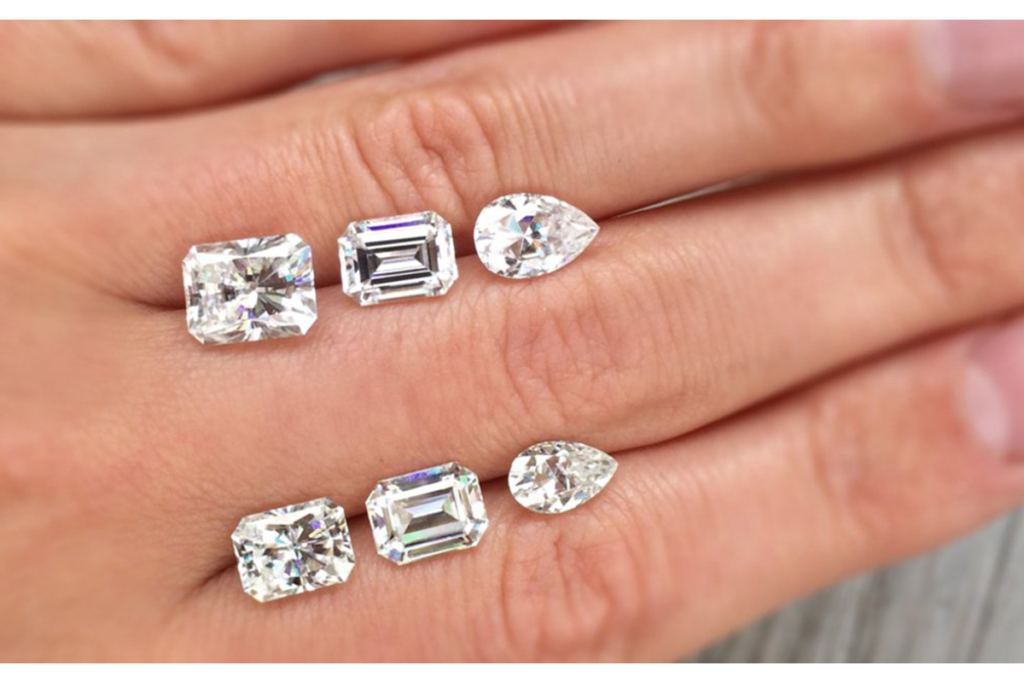
K Color Diamonds
These belong to the “faint tint” group under GIA’s diamond color scale—they have a light yellow tint that the naked eye can see. Regarding pricing, K color diamonds are considerably less expensive than the G-J color group.
A K color round brilliant cut diamond will appear stunning when set in elegant yellow gold. Still, K-colored diamonds should not be set in white gold or platinum because the combination doesn’t look suitable.
L Color Diamonds
L color grade stones are yellowish and can be seen by the naked eye in normal lighting. This color is cheaper than the G-J color group, making it a good choice price-wise.
L color round brilliant cut diamonds can be a good choice for yellow gold engagement rings because the warm tone of the metal complements their color. However, experts only recommend using L color grades for round diamond shapes. They’re also not recommended for diamonds set in white gold or platinum.
M Color Diamonds
M color diamonds have a distinct yellow hue that can be seen without magnification. They offer more value than colorless and almost colorless diamonds, just like diamonds in the L and K color ranges.
Although M-color diamonds can be lovely when set in antique yellow gold, the color of these stones is often too noticeable for many. In most cases, jewelry stores consider the M color the least color grade they offer.
N-R Color Diamonds
This color range possesses a marked yellow or brown shade. In terms of price category, N-R color diamonds are more affordable than near-colorless and slightly tinted diamonds. Most diamond stores rarely recommend buying any diamond from this group.
S-Z Color Diamonds
Diamonds in this color range have a very obvious brown or yellow shade. Because of the low quality of S-Z color diamonds, they are usually not recommended by any diamond expert or jewelry shop.
What’s the Best Color for a Diamond?
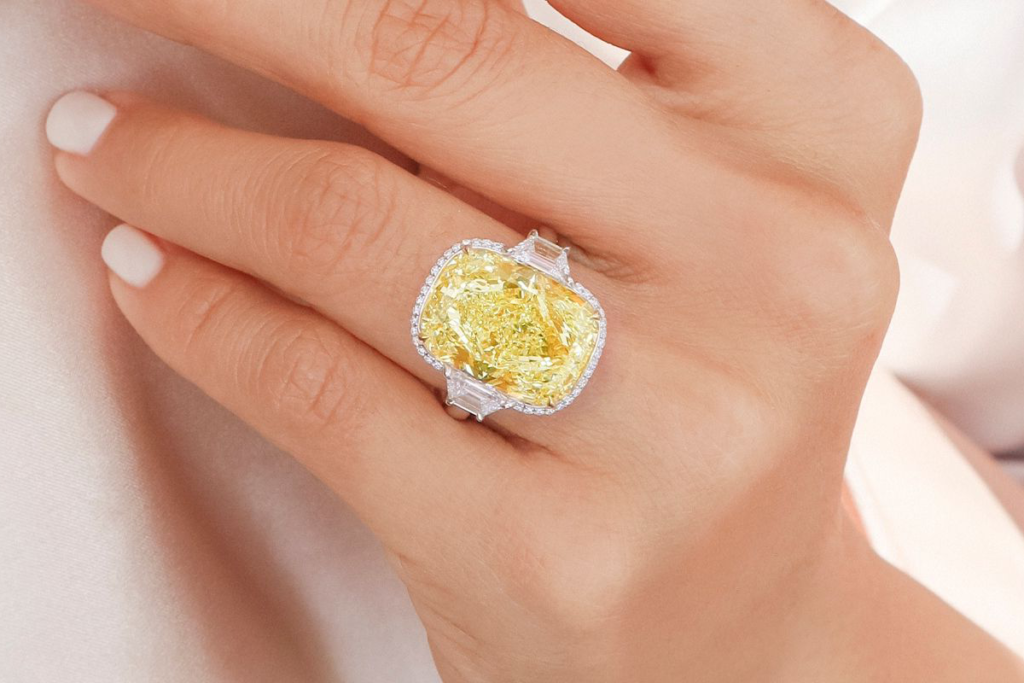
What is the best color grade for diamonds? D color is the finest diamond color grade. It is free of any tint of yellow or other colors.
However, having the finest GIA grade doesn’t automatically make D color diamonds the best choice for any engagement ring. If you’re after quality and affordability, using a G or even I color diamond on a platinum band is better. It will look alike yet cost significantly less.
For instance, you have a 1-carat D round brilliant cut diamond with a superb cut and VS2 clarity with an average price of around $7,000. Compare it with an I-color diamond with the same clarity and carat, and you won’t see any difference except for the price! When viewed under 20 times magnification, you’ll notice a slight disparity between the two, which is almost unnoticeable under the naked eye.
Of course, if you have unlimited cash to splurge in shopping for that perfect diamond engagement ring, there’s no reason to settle for anything less than the best. You only need to remember that a high-quality diamond will always look better than a low-grade one, no matter what type of setting or band it’s placed in.
A diamond’s color is vital but not the only thing that matters
Nobody can ignore the importance of a diamond’s color. The diamond’s color grade is an important factor in determining its value. The more colorless a diamond is, the more expensive it will be. The lower the color grade, the less colorless a diamond is considered; thus it will cost you less.
However, a C-rated diamond looks just like an I-rated diamond with its full body of color. In choosing your ring or bracelet, you should also consider other factors, such as cut quality, clarity, and carat weight.
The cut and clarity of a diamond are equally important in determining its overall quality and appearance. We can’t stress enough how important it is to have your diamonds graded by a professional gemologist before purchasing them.
The cut of the diamond also plays a vital role in its overall appearance and value. If you’re after quality and affordability, using a G or even I color diamond on a platinum band is better. It will look alike yet cost significantly less.
If you want to know more about diamonds, be sure to read our post, “Diamond Gemstone: Properties, Use and Benefits.”
